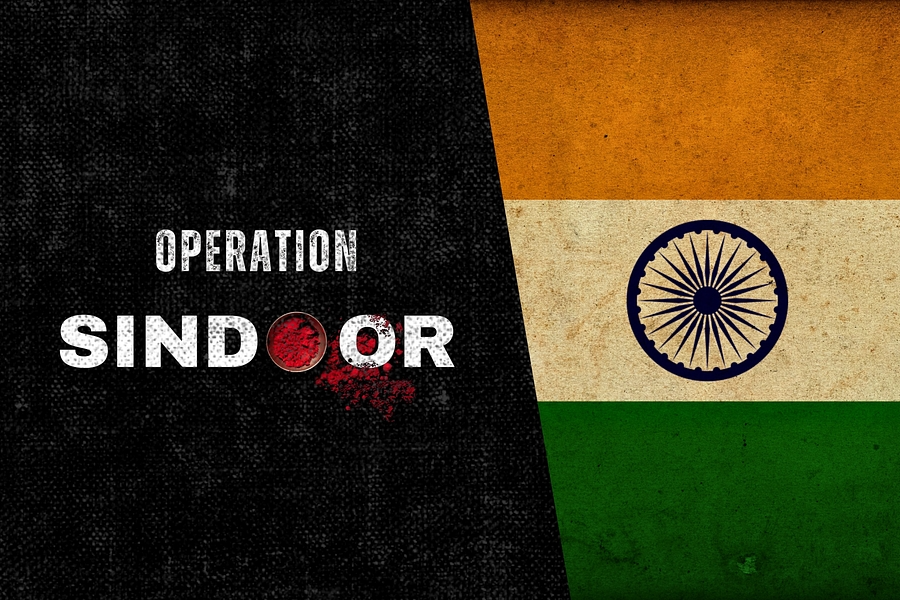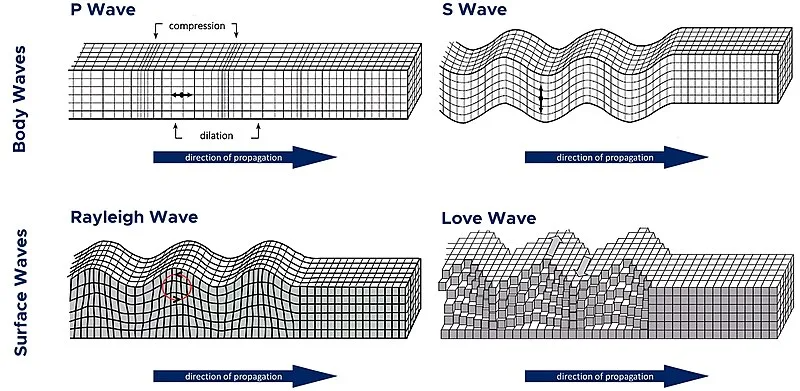September 08th Current Affairs
Table of Contents
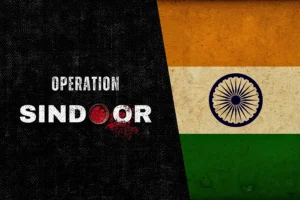
Operation Sindoor
July 21st Current Affairs Home / Operation Sindoor Why in News? Parliament’s Monsoon Session, starting July 21, 2025, is expected to feature
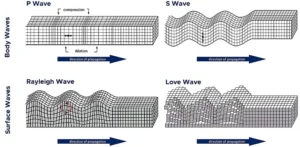
Alaska Earthquakes
July 21st Current Affairs Home / Alaska Earthquakes Why in News? On July 21, 2025, Alaska Peninsula was struck by
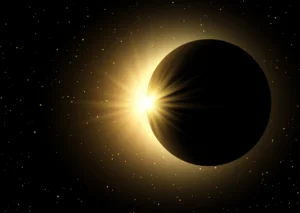
August 2, 2027 Solar Eclipse
July 21st Current Affairs Home / August 2, 2027 Solar Eclipse Why in News? A total solar eclipse is set
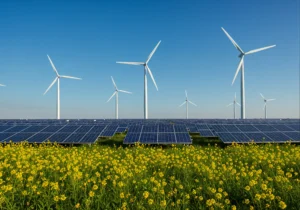
India’s milestone in clean energy transition
July 21st Current Affairs Home / India’s milestone in clean energy transition Why in News? India achieved a milestone by

‘Baby Grok’, child-friendly AI app
July 21st Current Affairs Home / ‘Baby Grok’, Child-friendly AI app Why in News? Elon Musk’s AI company xAI has announced
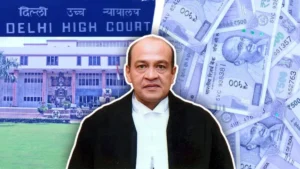
Impeachment proceedings against Justice Yashwant Verma
July 22nd Current Affairs Home / Impeachment proceedings against Justice Yashwant Verma Context On July 22, 2025, impeachment proceedings against
Total lunar eclipse end; ‘Blood Moon’ mesmerises skywatchers
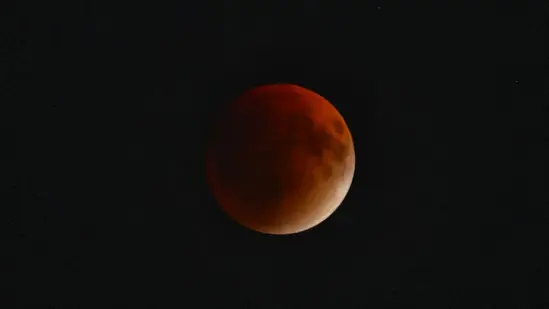
Relevance to UPSC
- Geography (GS-I): Demonstrates predictability of celestial events and human ability to track natural cycles & observation systems.
- Science & Technology (GS-III): Explains Earth’s shadow, umbra/penumbra, Rayleigh scattering. Shows how astronomical observations reveal atmospheric composition & light behavior.
More About the News
- Date & Duration: The total lunar eclipse occurred on the night of September 7–8, 2025, lasting approximately 82 minutes.
- Visibility: This rare celestial event was visible across India, and much of Asia, Africa, Europe, and Australia.
- Scientific Phenomenon: During totality, the Moon appeared deep red—a “Blood Moon” effect—caused by Earth’s atmosphere scattering shorter (blue) light and allowing red wavelengths to reach the Moon.
- Cultural Significance: The eclipse coincided with Pitru Paksha, a spiritually significant period, and entailed observance of the Sutak period, during which certain religious and social activities were traditionally suspended
LUNAR ECLIPSE
A lunar eclipse occurs when the Earth comes between the Sun and the Moon, casting its shadow on the Moon. Unlike solar eclipses, lunar eclipses are visible from large parts of the Earth and have been observed for millennia, shaping both scientific understanding and cultural beliefs.
Why It Is Formed?
- Formed due to the alignment of Sun, Earth, and Moon in a straight line.
- Happens only during a full moon.
- Earth blocks sunlight from reaching the Moon.
How It Is Formed?
- Earth’s shadow falls on the Moon, creating three stages:
- Penumbral Eclipse: Partial dimming when Moon passes through Earth’s penumbra.
- Partial Eclipse: Only part of Moon enters Earth’s umbra.
- Total Eclipse (Blood Moon): Entire Moon in umbra, appearing red due to Rayleigh scattering.
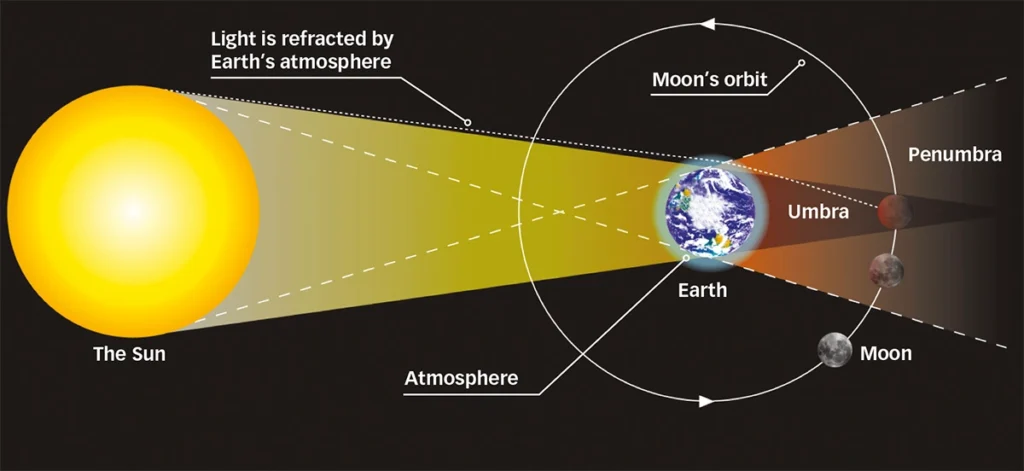
Significance
- Helps study Earth’s atmosphere (light scattering, dust content).
- Historically used for timekeeping and calendar systems.
- Strengthens scientific concepts of orbital mechanics & celestial alignments.
- Serves as a natural astronomical event for public engagement.
Impacts
- Scientific: Opportunity for astronomers to study Moon’s surface and Earth’s atmosphere.
- Cultural: Associated with rituals, fasting, and taboos in many societies.
- Psychological/Social: May fuel superstitions or myths affecting daily activities.
- Environmental: No direct impact, but sometimes studied for atmospheric clarity.
Mythological Aspect
In Hindu mythology, lunar eclipses are explained through the story of Rahu and Ketu. According to legend, during the Samudra Manthan (churning of the ocean), the demon Swarbhanu disguised himself to drink Amrit (nectar of immortality). When the Sun and Moon revealed his trick, Vishnu severed his head. The immortal head (Rahu) and body (Ketu) continue to chase the Sun and Moon; whenever they catch the Moon, a Chandra Grahan (lunar eclipse) occurs. This tale symbolises the cosmic battle between light and darkness.
The lunar eclipse is not merely an astronomical phenomenon but also a cultural and mythological symbol across civilizations. While modern science explains it through orbital mechanics, its presence in mythology highlights how humanity has long sought to interpret cosmic events—blending science, culture, and spirituality.
Prelims MCQ
Q. Consider the following statements regarding a Lunar Eclipse: 1. A lunar eclipse can occur only on a full moon day. 2. The reddish appearance of the Moon during a total lunar eclipse is due to Earth’s atmosphere scattering shorter wavelengths of light. 3. Lunar eclipses are visible only from a small region of the Earth, unlike solar eclipses. Which of the above statements is/are correct?
A. 1 and 2 only
B. 2 and 3 only
C. 1 and 3 only
D. 1, 2 and 3
The red colour (Blood Moon) is due to Rayleigh scattering in Earth’s atmosphere.
Unlike solar eclipses, lunar eclipses are visible from large parts of the Earth, not a limited region.
Mains Question
Q. “Lunar eclipses are not only astronomical events but also cultural markers in human history.” Discuss the scientific, cultural, and societal dimensions of lunar eclipses. How can such natural phenomena be leveraged to promote scientific temper in society?
European Union negotiators coming to Delhi this week to step up FTA talks
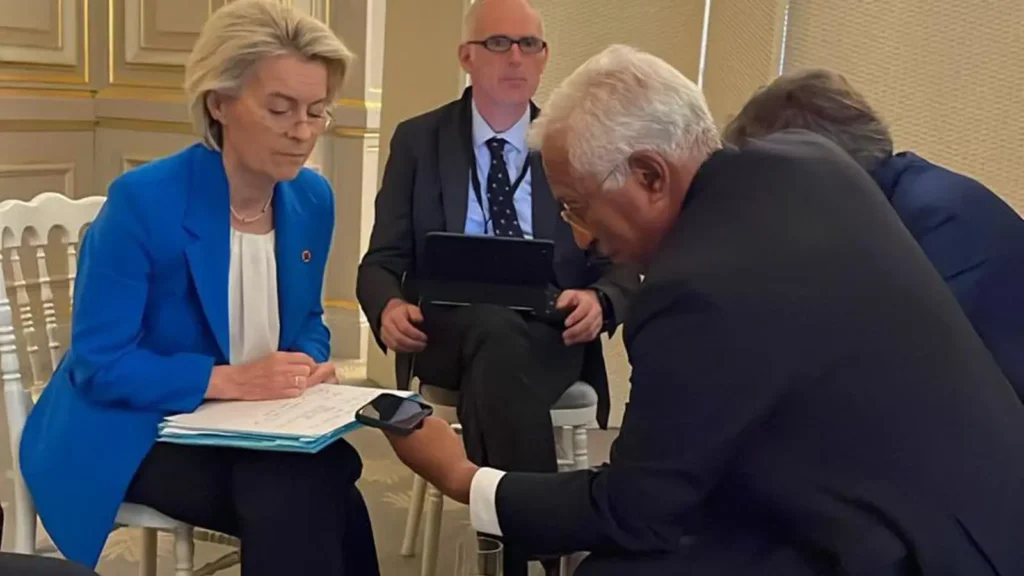
Relevance to UPSC
- International Relations (GS-II)
- Demonstrates India’s proactive diplomacy with a major global bloc—EU—in navigating geopolitical pressure amidst US tariff uncertainties.
- Reflects India’s expanding strategic partnerships beyond traditional allies, towards a multipolar world order.
- Economy & Trade (GS-III)
- Emphasises the pursuit of a comprehensive FTA aimed at tariff liberalisation and integration into European value chains.
- Addresses critical issues like digital trade, investment protection, regulatory alignment, and challenges like CBAM, highlighting the economic complexity of contemporary trade agreements.
More About the News
- High-level EU visit: Trade Commissioner Maroš Šefčovič and Agriculture Commissioner Christophe Hansen are in New Delhi to push forward India–EU FTA talks.
- 13th negotiation round: Current round held in Delhi; next round scheduled in Brussels, with a target to finalise the deal by end of 2025.
Key issues under discussion:
- Tariff reductions and market access (automobiles, wine, dairy, pharma, textiles).
- Digital trade and investment protection.
- Trade–climate linkage challenges like the Carbon Border Adjustment Mechanism (CBAM).
INDIA - EUROPEAN UNION (EU) RELATIONS
India and the European Union share a strategic partnership since 2004, rooted in common democratic values, trade, technology, and global governance. Over time, cooperation has expanded to areas like climate change, digital transition, connectivity, and regional security, though challenges remain in realizing the full potential of the relationship.
Evolution of India–EU Relations
- 1962 – India established diplomatic ties with the European Economic Community (EEC).
- 1994 – India–EU Cooperation Agreement signed, providing a framework for political dialogue.
- 2000 – First India–EU Summit launched a structured dialogue mechanism.
- 2004 – Relationship upgraded to Strategic Partnership.
- 2021 – Connectivity Partnership Agreement signed, focusing on digital, energy, transport, and people-to-people links.
Strengths of India–EU Ties
- Trade & Investment Partner – EU is India’s second-largest trading partner (~11% of trade); India is EU’s 10th largest partner.
- Technology & Research – Joint work in AI, space, clean energy; India participates in Horizon Europe research program.
- Climate & Green Energy Cooperation – EU supports India’s renewable energy goals; partnership in International Solar Alliance (ISA).
- Democratic Values – Shared commitment to multilateralism, rule of law, and human rights.
- Connectivity & Infrastructure – EU part of India–Middle East–Europe Economic Corridor (IMEEC), promoting sustainable connectivity.
Weaknesses in the Relationship
- FTA Deadlock – India–EU FTA negotiations (since 2007) delayed due to differences on tariffs, services, and agriculture.
- Divergent Foreign Policy Stances – EU critical of India on human rights, CAA, Kashmir, creating diplomatic friction.
- Trade Imbalances – EU’s strict standards and regulations (e.g., carbon tax, food safety norms) disadvantage Indian exporters.
- Security Cooperation Limited – EU’s fragmented defense policy weakens counter-terrorism and maritime security ties.
- Underutilised Potential – Despite size, EU is not India’s top FDI source (lagging behind US, Singapore, Mauritius).
Major Initiatives Taken Together
- India–EU Strategic Partnership: Roadmap 2025 (launched in 2020).
- Connectivity Partnership Agreement (2021).
- Joint Naval Exercises in the Gulf of Aden and Indian Ocean.
- EU–India Clean Energy and Climate Partnership.
- Digital Investment Forum for tech collaboration.
Challenges in the Relationship
- Trade Protectionism – EU’s Carbon Border Adjustment Mechanism (CBAM) could raise costs for Indian steel/aluminium exports.
- Agriculture & Dairy Sensitivities – India unwilling to open markets; EU seeks access (e.g., dairy, wines, spirits).
- Human Rights Concerns – EU Parliament resolutions on Jammu & Kashmir, CAA strain political trust.
- China Factor – EU cautious about India’s role in the Indo-Pacific, as some EU states pursue business ties with Beijing.
- Ukraine War Divergence – EU expects India to align with sanctions, but India follows strategic autonomy with Russia.
How are the Challenges Countered?
- Trade Diplomacy – Restarted FTA negotiations in 2022; ~50% chapters closed by 2025.
- Strategic Autonomy Dialogue – EU recognizing India’s neutral stance on Russia–Ukraine.
- Sectoral Cooperation – Focus on technology, climate, connectivity where interests align.
- Maritime Cooperation – Joint exercises in the Indo-Pacific strengthen trust.
- Diversification of Partnerships – Expanding people-to-people, academic, and cultural exchanges to balance political frictions.
Way Forward
- Early Conclusion of FTA balancing India’s domestic sensitivities and EU’s regulatory concerns.
- Deepening Indo-Pacific Cooperation with EU naval presence in Indian Ocean.
- Green & Digital Transition Partnership aligned with NEP 2020 and EU’s Green Deal.
- Reform Multilateral Institutions jointly for global governance (UNSC, WTO, IMF).
- Boost People-to-People Linkages via migration, education, and cultural programs.
India–EU relations are at a critical juncture, with opportunities to become a transformative global partnership. As the world shifts towards multipolarity, convergences in trade, climate, technology, and security can help overcome past frictions. A successful India–EU FTA and connectivity partnership could redefine global supply chains and cement both as pillars of a rules-based international order.
Prelims MCQ
Q. With reference to India–European Union (EU) relations, consider the following statements: 1. The EU is India’s largest trading partner and a major source of FDI inflows. 2. The India–EU Free Trade Agreement (FTA) negotiations have been ongoing intermittently since 2007. 3. The EU’s Carbon Border Adjustment Mechanism (CBAM) is primarily aimed at promoting climate-friendly trade practices, which may affect India’s export competitiveness. Which of the above statements is/are correct?
A. 1 and 2 only
B. 2 and 3 only
C. 1 and 3 only
D. 1, 2, and 3
Mains Question
Q. “India–EU relations reflect the convergence of economic interests, climate goals, and strategic connectivity, but persistent challenges hinder the full potential of this partnership.” Critically analyse the opportunities and obstacles in India–EU relations, with special reference to trade, technology, and climate policy.
GST ambiguity persists for ride-hailing apps as food delivery now faces 18% levy
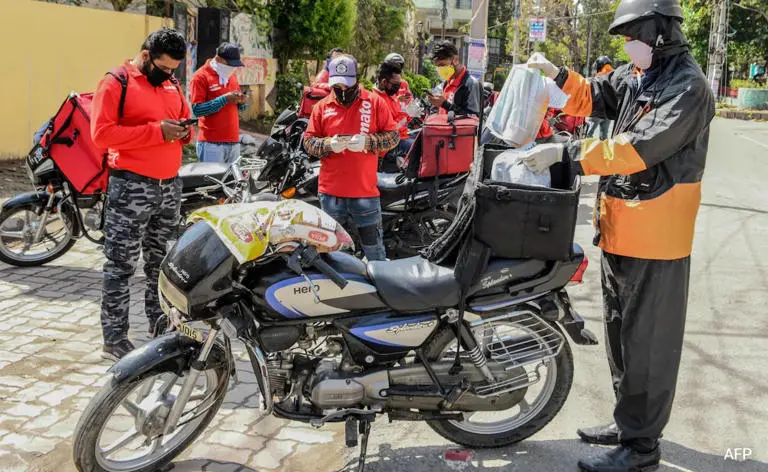
Relevance to UPSC
- Taxation & Fiscal Policy (GS-III): Illustrates evolving GST interpretations that define the categorization of digital platform services, showcasing the complexity of modern indirect tax regimes.
- Digital Economy & Gig Sector (GS-III): Highlights the taxation challenges faced by the gig economy, emphasizing how regulatory changes can affect platform business models and gig workers’ incomes.
- Economic Impact & Consumer Behaviour (GS-III / GS-II): Potential consumer cost escalation and alteration in demand patterns during the festive season exemplifies the ripple effects of fiscal policy changes on consumption and spending behavior.
More About the News
- GST Council decision: In its 56th meeting, the Council clarified that local delivery services via e-commerce operators will attract 18% GST under Section 9(5), in addition to the 5% on food services and platform fees.
- Industry objection: Platforms like Zomato and Swiggy contend that deliveries are carried out by independent partners, not the platforms, and thus GST liability should not rest on them.
- Ride-hailing uncertainty: Ambiguity remains on whether subscription-based ride-hailing models fall under GST for passenger payments.
- Impact on consumers: The new levy is likely to be passed on to customers, raising the cost of app-based food delivery from September.
GIG ECONOMY
The gig economy refers to a labor market characterized by short-term, flexible, freelance or contractual work facilitated largely through digital platforms. It has grown rapidly with the rise of app-based services like Uber, Swiggy, and Urban Company. This model reflects the global shift toward technology-driven, on-demand work.
Evolution of Gig Economy
- Traditional freelancing – Earlier limited to writers, artists, and small contractors. (e.g., freelance journalists in 1990s)
- Platform-based rise – With internet penetration, platforms like Upwork, Fiverr emerged in the 2000s.
- App-based model – Smartphones enabled services like Uber (2009) and Zomato/Swiggy (2014-15).
- Pandemic boost – COVID-19 increased reliance on delivery workers, telemedicine, edtech tutors.
- Diversification – Now extends to white-collar gig work (consulting, coding, digital marketing on Toptal, Freelancer).
Features
- Flexibility – Workers choose hours; e.g., Ola drivers logging in/out anytime.
- Task-based remuneration – Pay per ride/delivery; e.g., Swiggy orders.
- Platform intermediation – Apps connect workers to consumers; e.g., Urban Company beauticians.
- Technology-driven monitoring – GPS, rating systems; e.g., Uber’s rider feedback.
- Low entry barrier – Minimal formal education/skills needed; e.g., bike + smartphone sufficient for food delivery.
Impacts
- Employment generation – Millions engaged in India; e.g., ~7.7 million gig workers (NITI Aayog, 2022).
- Supplementary income – Students/part-timers earning via freelancing on Fiverr.
- Urban service efficiency – Quick commerce (Blinkit, Zepto) meets rising demand.
- Social inclusion – Women/disabled persons access remote freelancing; e.g., online tutoring.
- Economic growth driver – Gig economy could create 90 million jobs in India by 2030 (BCG report).
Advantages
- Flexibility for workers – Control over schedules; e.g., Uber drivers.
- Consumer convenience – 24/7 services; e.g., Swiggy Instamart groceries.
- Entrepreneurial opportunities – Freelancers run independent businesses; e.g., graphic designers on Upwork.
- Skill diversification – Multiple gigs allow varied experience; e.g., coders switching between projects.
- Boost to digital economy – Expands online payment adoption; e.g., UPI integration with gig platforms.
Disadvantages
- Job insecurity – No guaranteed income; e.g., Ola drivers during lockdowns.
- Lack of social security – No PF/ESI benefits; e.g., Swiggy delivery partners.
- Algorithmic exploitation – Dynamic pricing cuts worker earnings; e.g., Uber surge pricing benefits platform.
- Mental & physical strain – Long working hours for incentives; e.g., Blinkit riders under tight deadlines.
- Inequality – Limited to urban areas; rural India still excluded.
Challenges Faced
- Regulatory ambiguity – Are gig workers employees or contractors? (Case: UK Supreme Court ruling Uber drivers as workers, 2021)
- Low bargaining power – Platforms unilaterally set terms. (Swiggy strikes for better pay)
- Digital divide – Rural workers excluded due to lack of access.
- Income instability – Seasonal demand fluctuations; e.g., fewer rides during lockdowns.
- Safety & insurance issues – Delivery partners at risk without adequate coverage.
Government Initiatives
- Code on Social Security, 2020 – Includes gig and platform workers in social security framework.
- e-Shram Portal (2021) – National database for unorganised workers including gig workers.
- PM-SYM – Pension scheme for unorganised workers (can cover gig workforce).
- Skill India / PMKVY – Reskilling to prepare workers for new gig opportunities.
- State-level schemes – Rajasthan’s Platform-based Gig Workers Act, 2023 ensures welfare board and fund.
Best Practices
- Global Examples
- UK (Uber case, 2021) – Supreme Court recognised Uber drivers as “workers” entitled to minimum wage, holiday pay.
- Indian Examples:
- Rajasthan Gig Workers Act, 2023 – First state law to protect gig workers, mandates welfare fund.
- Karnataka Digital Economy Mission – Promotes freelancing hubs and skilling programs for gig workforce.
Way Forward
- Clear legal framework for worker classification.
- Social security coverage (insurance, PF-like schemes).
- Encourage platform accountability for fair wages.
- Promote digital literacy & rural inclusion.
- Foster tripartite dialogue among government, platforms, and workers.
The gig economy is a double-edged sword—while it drives innovation, jobs, and consumer convenience, it also creates new vulnerabilities for workers. India’s future lies in balancing flexibility with protection, making the gig sector a sustainable engine for inclusive growth.
Prelims MCQ
Q. With reference to the Gig Economy in India, consider the following statements:
1. The Code on Social Security, 2020, legally recognises gig and platform workers.
2. The Rajasthan Gig Workers Act, 2023, is India’s first state-level legislation dedicated to gig workers’ welfare.
3. Gig workers are entitled to Employees’ Provident Fund (EPF) benefits under existing labour laws.
Which of the above statements is/are correct?
A. 1 and 2 only
B. 2 and 3 only
C. 1 and 3 only
D. 1, 2 and 3
Code on Social Security 2020 includes gig/platform workers in the social security framework. Rajasthan Act 2023 is the first dedicated state legislation. Gig workers are not yet entitled to EPF; they are distinct from traditional employees..
Mains Question
Q. “The gig economy reflects the future of work but exposes vulnerabilities in labour rights and social security.” Critically analyse the evolution, opportunities, and challenges of the gig economy in India. Suggest measures to ensure a balance between innovation and worker welfare.
Asia Cup Hockey: India regains crown with big win, qualify for 2026 World Cup
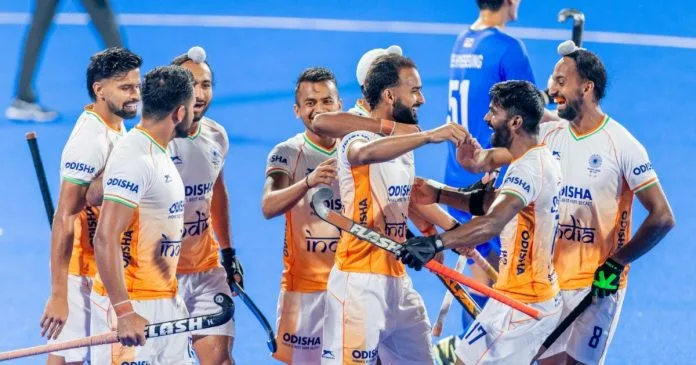
Relevance to UPSC
Governance & Infrastructure (GS-II / GS-III) : Organized in Rajgir, Bihar, the event underscores the promotion of sports infrastructure in tier-II cities, resonating with policies such as Khelo India aimed at inclusive sports development.
More about the News
- India clinched the 2025 Men’s Asia Cup Hockey title, defeating South Korea 4-1 in Rajgir, Bihar—their first win in eight years
- Goals came from Sukhjeet Singh, Dilpreet Singh (brace), and Amit Rohidas, ensuring a dominant performance
- The victory also secured India’s direct qualification for the 2026 Hockey World Cup
SPORTS GOVERNANCE IN INDIA
Sports governance in India has evolved from being state-driven and elitist to a multi-stakeholder system involving government, federations, and private entities. It reflects the intersection of youth empowerment, diplomacy, health, and economic growth. In the 21st century, sports is not just about medals but also about soft power, inclusivity, and nation-building.
Evolution of Sports Governance in India
- Pre-Independence – Sports were elite-driven (cricket, hockey under colonial clubs).
- Post-Independence (1947–70s) – State-led promotion; creation of National Sports Federations (NSFs), All India Council of Sports.
- 1980s–90s – Rise of Sports Authority of India (SAI), focus on infrastructure, Asian Games 1982 as turning point.
- 2000s onwards – Khelo India, PPP models, IPL/ISL; greater private involvement.
- Current phase – Digitalisation, corporate sponsorship, gender equity, and global competitiveness.
Constitutional & Non-Constitutional Provisions
- Constitutional
- Sports is in the State List (Seventh Schedule, Entry 33).
- Article 21A (Right to Education) indirectly promotes sports through school curriculum.
- Directive Principles: Article 47 (improvement of health, nutrition) links to sports promotion.
- Non-Constitutional
- National Sports Policy (2001, draft 2017).
- Guidelines for recognition of National Sports Federations.
- Judicial interventions (e.g., Lodha Committee on BCCI).
Major Agencies/Departments Involved
- Ministry of Youth Affairs & Sports (MoYAS).
- Sports Authority of India (SAI).
- National Sports Federations (e.g., BCCI, AIFF, Hockey India).
- Indian Olympic Association (IOA).
- State-level sports councils & academies.
Advantages of Sports Governance
- National Prestige – Success boosts India’s global standing. (e.g., Neeraj Chopra’s Olympic gold)
- Youth Development – Harnessing demographic dividend. (e.g., Khelo India identifies grassroots talent)
- Economic Growth – Job creation, tourism. (e.g., IPL contributes ₹11,500 crore annually to GDP)
- Social Inclusion – Women & differently-abled representation. (e.g., Paralympics medal success)
- Diplomacy & Soft Power – Strengthens India’s image abroad. (e.g., hosting 2010 CWG, 2023 Cricket World Cup)
Impacts of Sports Governance
- Improved Performance – Rise in medal tallies. (e.g., Tokyo Olympics 2020 – India’s best ever)
- Infrastructure Development – World-class stadiums. (e.g., Kalinga Stadium, Odisha for hockey)
- Professionalisation – Emergence of leagues. (e.g., ISL in football, Pro Kabaddi League)
- Cultural Unity – National integration through sports. (e.g., cricket as unifying factor)
- Health Promotion – Encourages fitness. (e.g., Fit India Movement)
Challenges Faced
- Bureaucratic delays – Inefficient clearances. (e.g., controversies in IOA elections)
- Corruption & Mismanagement – Fund misuse. (e.g., CWG 2010 scam)
- Over-politicisation – Politicians dominate federations. (e.g., BCCI governance issues)
- Inadequate Grassroots Support – Limited rural outreach. (e.g., talent loss in tribal regions)
- Gender & Equity gaps – Unequal opportunities, harassment. (e.g., recent Wrestling Federation of India protests)
Government Initiatives
- Khelo India Scheme (2018).
- Target Olympic Podium Scheme (TOPS).
- National Centre of Sports Science and Research (NCSSR).
- Fit India Movement.
- Pension & awards schemes for athletes (Arjuna, Dronacharya, Dhyan Chand awards).
Best Practices
- Global
- Australia’s AIS (Australian Institute of Sport) – integrated coaching, science, nutrition.
- UK’s National Lottery Funding – sustained athlete support led to Olympic success.
- India
- Odisha Model – State as sports sponsor; major investment in hockey.
- Private academies – JSW Sports, Gopichand Badminton Academy nurturing global champions.
Lodha Committee Report – Key Recommendations
- Age & Tenure Restrictions: Office-bearers must be below 70 years, serve a maximum of 3 terms, and not hold consecutive terms.
- One Person – One Post: No individual can hold multiple posts across BCCI/state cricket associations.
- Cooling-off Period: Mandatory 3-year cooling-off after one term before seeking re-election.
- Player Representation: Inclusion of former players in cricket administration through a Players’ Association.
- Transparency & Accountability: Mandatory auditing of accounts, and CAG nominee on the Apex Council for oversight.
- Conflict of Interest Rules: Strict definitions and prevention of conflict of interest (players, administrators, selectors, commentators).
- Separation of Roles: Clear division between governance (Apex Council) and management (CEO & professional staff).
- Zonal System Abolished: Presidential elections not to be based on zones; equal voting rights for all associations.
- Right to Information (RTI): Suggested bringing BCCI under RTI Act for transparency.
- Regulation of IPL: Independent governing body for IPL to avoid overlap with BCCI administration.
Way Forward
- Transparent governance with accountability in federations.
- Sports as a Fundamental Right under Right to Education.
- Public-private partnerships for infrastructure.
- Grassroots expansion beyond metros.
- Gender-sensitive reforms and safe environment for athletes.
Sports governance in India is at a critical inflection point, balancing tradition with modernisation. By fostering transparency, inclusivity, and global best practices, India can transform into a sporting powerhouse. The future lies in aligning sports with youth aspirations, digital platforms, and international competitiveness.
Prelims MCQ
Q. With reference to Sports Governance in India, consider the following statements:
1. Sports is included in the Union List of the Indian Constitution.
2. The Sports Authority of India (SAI) is an autonomous body under the Ministry of Youth Affairs & Sports.
3. The Target Olympic Podium Scheme (TOPS) is aimed at identifying grassroots-level talent in schools.
Which of the above statements is/are correct?
A. 2 only
B. 1 and 3 only
C. 2 and 3 only
D. 1, 2 and 3
Sports is in the State List, not Union List. SAI is an autonomous body under MoYAS. TOPS is for elite athletes’ Olympic preparation, not grassroots identification (that’s Khelo India).
Mains Question
Q. “Sports governance in India reflects both its strengths in youth power and weaknesses in institutional design.” Examine the evolution of sports governance in India. Highlight the challenges it faces and suggest reforms for building India into a global sporting power.
NDA, INDIA blocs to train MPs on voting procedure for Vice-President election
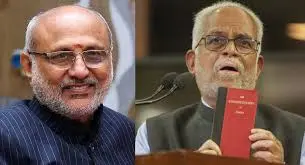
Relevance to UPSC
- Parliamentary Procedure (GS-II)
- Highlights practical steps taken for legislative preparedness and ensuring MPs understand and follow constitutional voting norms.
- Vice President Elections
- Reflects how political blocs invest in vetting and training MPs, showing the intersection of political strategy and institutional governance.
More about the News
- Training Workshops Held: Ahead of the Vice-Presidential election on September 9, 2025, both the NDA and INDIA blocs are conducting workshops to train their MPs on the voting procedures.
- Mock Drill & Focus on First-Timers: The BJP organized a multi-day “Sansad Karyashala” with mock voting drills, focusing especially on first-time MPs to avoid procedural errors.
- Opposition’s Preparation: The INDIA bloc is also holding mock sessions in Central Hall, Parliament, ensuring their MPs are well-versed in the secret ballot process.
Vice President Elections
The Vice President of India is the second-highest constitutional office, primarily acting as the Chairperson of the Rajya Sabha and stepping in as acting President when needed. The election process ensures independence, fairness, and representation of parliamentary opinion. Understanding its constitutional and procedural framework highlights the checks, balances, and democratic ethos of India’s parliamentary system.
Evolution of Vice President Elections
- 1950s – Initially framed under the Constitution of India, 1950 (Articles 63–71).
- Post-independence practices – First VP election in 1952, with evolving procedural clarity through Rules of Procedure of Rajya Sabha.
- Electoral College expansion – Restricted to Parliament members only; no state legislatures involved (unlike President).
- Modern phase – Emphasis on transparent voting (secret ballot) and digital/electronic support for MPs.
Constitutional & Non-Constitutional Provisions
- Constitutional
- Articles 63–71: Establish the office, election method, eligibility, and role.
- Article 66 indirectly relevant (President election) for understanding similarities/differences.
- Eligibility: ≥35 years, citizen of India, not holding any office of profit.
- Non-Constitutional
- Vice President Election Rules, 2006 – Detailed procedures for nomination, scrutiny, voting, counting.
- Secret Ballot System guidelines by Election Commission of India (ECI).
Major Agencies/Departments Involved
- Election Commission of India (ECI) – Supervisory authority for entire process.
- Rajya Sabha Secretariat – Coordinates logistics and training of MPs.
- Parliamentary Secretariats – Supports documentation, notices, and ballot arrangements.
System or Method Borrowed From
The Indian concept and election of the Vice President are primarily borrowed from the United States (USA) Constitution. Similar to the US, India’s Vice President is the second-highest office and the ex-officio chairman of the upper house of Parliament (the Rajya Sabha).
Impacts of VP Elections
- Institutional Stability – Ensures smooth functioning of Rajya Sabha; e.g., VP acts as Chairperson ensuring legislative continuity.
- Checks & Balances – VP can influence legislative debate; e.g., ruling and opposition coordination during contentious bills.
- Democratic Legitimacy – Reflects MPs’ collective choice; e.g., 2017 VP election contested by NDA and UPA candidates.
- Succession Readiness – VP acts as acting President if office falls vacant; e.g., VP Hamid Ansari in 2007–2017 acted in President’s absence.
- Political Signaling – Election outcome reflects parliamentary strength; e.g., BJP victory in VP polls 2017 indicated NDA’s legislative clout.
Challenges Faced
- Low Public Visibility – General public often unaware of VP’s role; e.g., minimal media coverage compared to President elections.
- Political Polarization – Vote often along party lines; e.g., 2017 VP election NDA vs UPA contest.
- Secret Ballot Errors – MPs may miscast votes; e.g., need for mock drills in 2025.
- Election Logistics – Coordinating MPs across houses; e.g., complex arrangements for secret ballot.
- Limited Electoral College – Only MPs vote, reducing representation from states’ legislatures unlike Presidential election.
Role and Functions of Vice President
- Chairperson of Rajya Sabha – Conducts proceedings, maintains order, casts tie-breaking vote.
- Acting President – Temporarily assumes President’s duties when office vacant or incumbent unavailable.
- Advisor & Arbiter – Plays a neutral role in legislative debates and procedural rulings.
- Diplomatic Role – Represents India in ceremonial functions if President unavailable.
- Statutory Powers – Can influence parliamentary committees and legislative scheduling.
Best Practices
- Global:
- US Vice President Election – Elected alongside President; functions as Senate Chair; combines executive-legislative balance.
- UK Deputy Speaker Selection – Secret ballot ensures impartial legislative leadership.
- India:
- Mock Voting Workshops (2025) – Training MPs in secret ballot to prevent procedural errors.
- Electronic Ballot System by ECI – Streamlined and secure voting for Parliament members.
Way Forward
- Enhance public awareness about VP’s constitutional role.
- Use digital tools and mock drills for error-free elections.
- Consider increasing inclusivity by educating MPs on procedures, especially first-timers.
- Strengthen neutrality norms for acting as Chairperson.
- Ensure continuity planning for smooth assumption of President’s duties.
Vice President elections are a cornerstone of India’s parliamentary democracy, balancing political representation with procedural neutrality. Strengthening transparency, inclusivity, and awareness will ensure the office continues to support legislative efficiency and democratic resilience. The VP role remains key to continuity, stability, and governance excellence.
Prelims MCQ
Q. With reference to the Vice President of India, consider the following statements:
1. The Vice President is elected by an electoral college consisting of MPs of both Houses of Parliament only.
2. The Vice President can hold an office of profit while in office.
3. The Vice President acts as the Chairperson of the Rajya Sabha.
Which of the statements given above is/are correct?
A. 1 and 3 only
B. 2 and 3 only
C. 1 and 2 only
D. 1, 2 and 3
Only MPs of Lok Sabha and Rajya Sabha form the electoral college. Holding office of profit is prohibited for constitutional posts like VP. VP automatically serves as Rajya Sabha Chairperson under the Constitution.
Mains Question
Q. “The Vice President of India plays a crucial constitutional and parliamentary role, yet faces visibility and procedural challenges.” Examine the evolution, electoral process, and functions of the Vice President. Suggest measures to strengthen the office for effective democratic governance.



